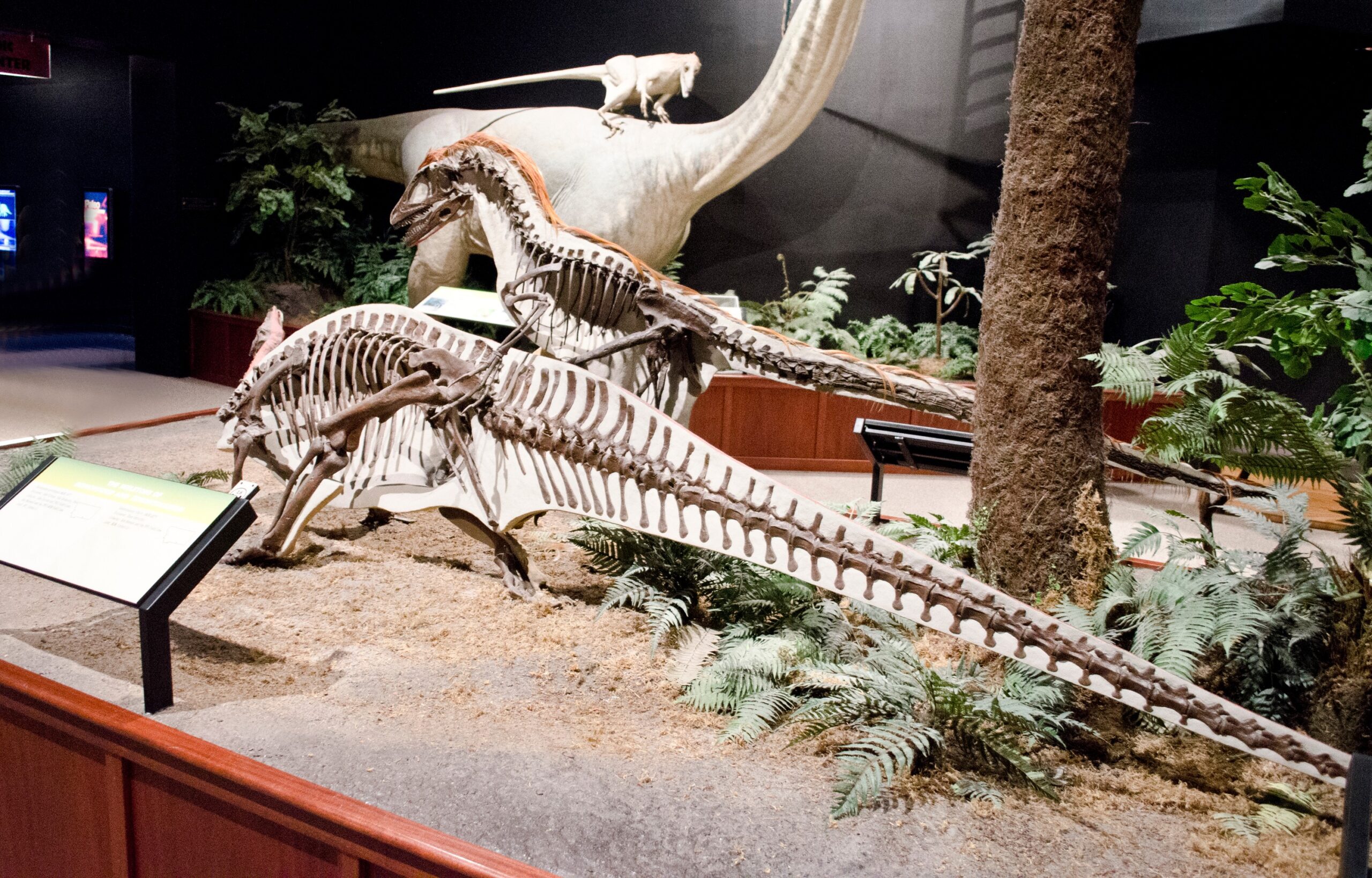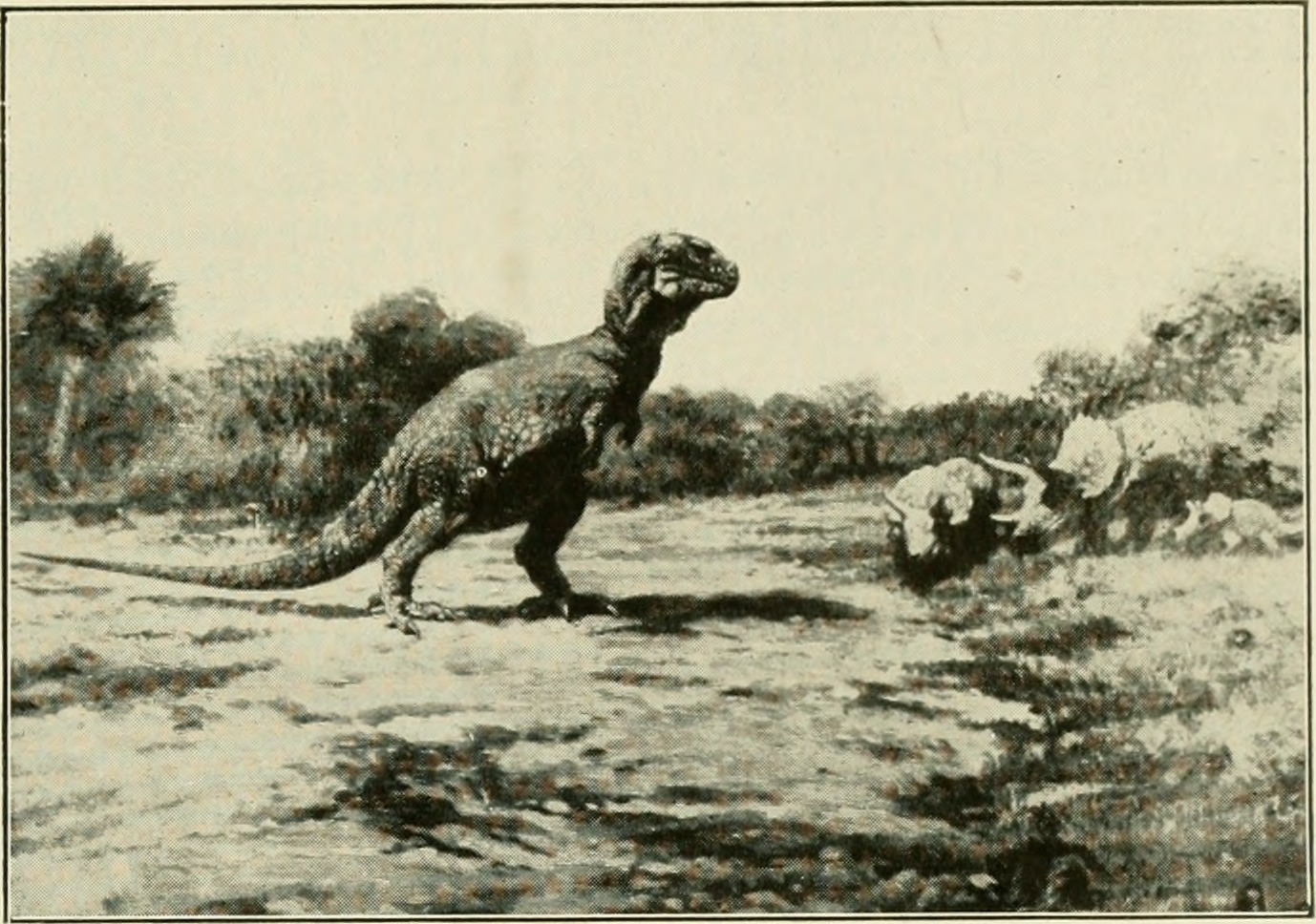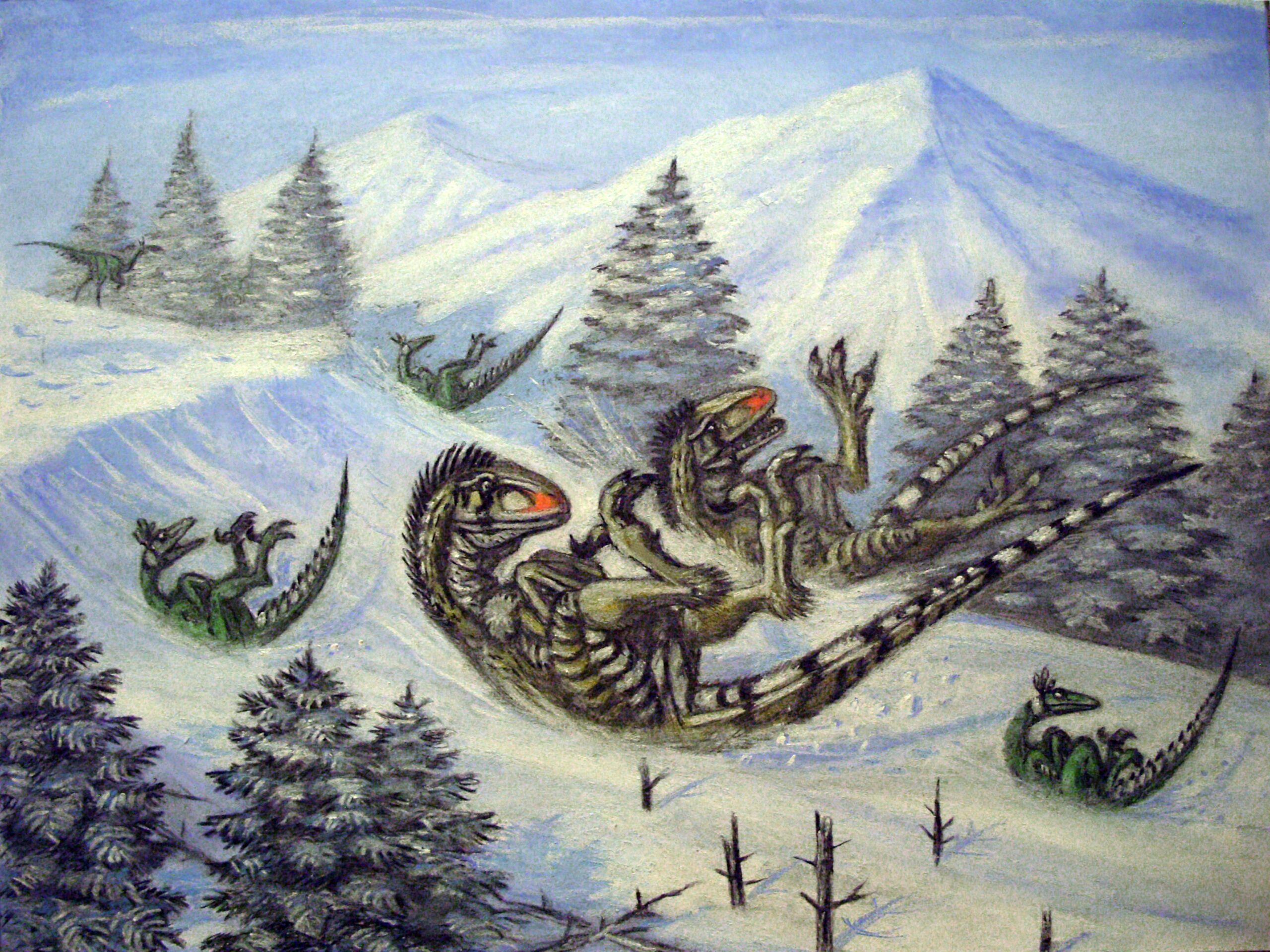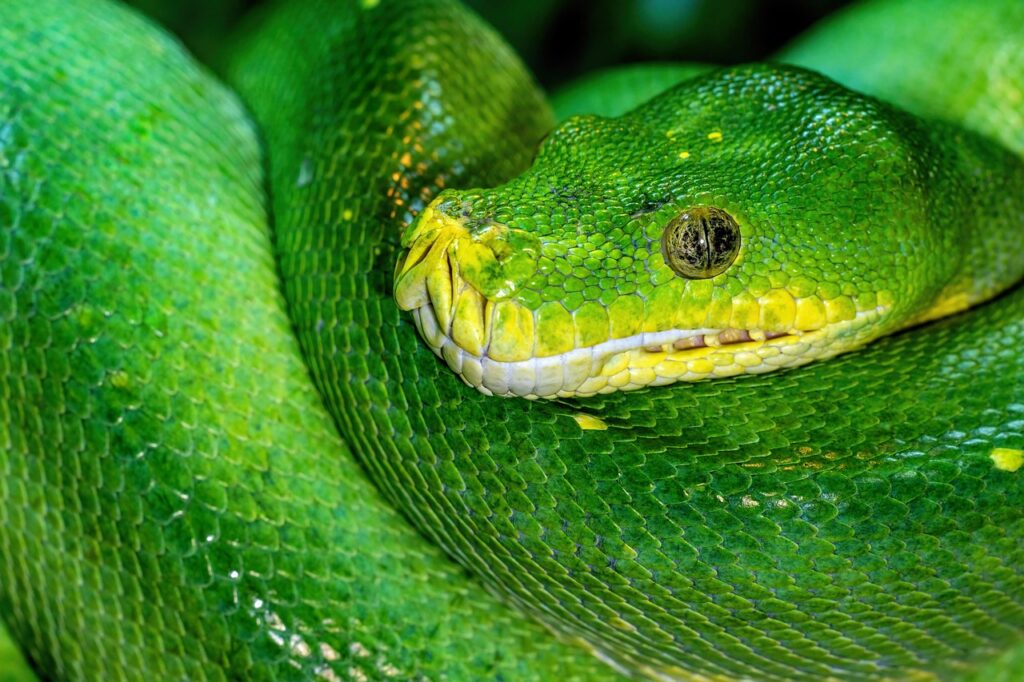Picture this: a massive T-Rex trudging through freshly fallen snow, its breath creating clouds of vapor in the frigid air. While we typically imagine dinosaurs basking under tropical suns, the reality is far more fascinating and complex. During the Mesozoic Era, Earth’s climate wasn’t always the warm, humid paradise we often envision. Some dinosaur species actually lived through periods of significant cooling, and a few may have witnessed something truly extraordinary – snow.
The Unexpected Climate Reality of the Mesozoic Era
The Mesozoic Era, spanning roughly 252 to 66 million years ago, wasn’t one continuous tropical paradise. While much of this period was indeed warmer than today, dramatic climate fluctuations occurred throughout the era. Volcanic activity, asteroid impacts, and shifting ocean currents created periods of significant cooling that would surprise most people.
Scientists have discovered evidence of ice formations and glacial activity during certain periods of the Mesozoic, particularly in polar regions. This means that dinosaurs living in higher latitudes or during cooler periods might have experienced temperatures cold enough for snow formation. The idea challenges our fundamental assumptions about dinosaur habitats and their adaptability to diverse climates.
Triceratops: The Cold-Weather Heavyweight
Triceratops, one of the most recognizable dinosaurs, lived during the late Cretaceous period in what is now North America. These massive herbivores inhabited regions that experienced significant seasonal temperature variations, including areas that likely saw snow during winter months. Their large body size and robust build would have helped them retain heat in colder conditions.
Fossil evidence suggests that Triceratops lived in herds, which could have provided additional warmth through huddling behavior. Their distinctive frills might have served multiple purposes, including temperature regulation. The thick, bony structure could have acted as insulation, helping these giants survive in environments where snow was a seasonal reality.
Therizinosaurus: The Feathered Giant in Frozen Landscapes
Therizinosaurus, a colossal theropod dinosaur from late Cretaceous Mongolia, lived in regions that experienced harsh winters with sub-zero temperatures. This massive dinosaur, reaching lengths of up to 16 feet, possessed feathers that likely served as insulation against the cold. The discovery of feathered dinosaur fossils in Mongolia has revolutionized our understanding of how these creatures survived in challenging climates.
The Gobi Desert region where Therizinosaurus fossils were found experiences extreme temperature variations even today. During the Cretaceous period, this area had a more temperate climate but still faced significant seasonal changes. These giant theropods would have needed substantial adaptations to survive winters that could have brought snow and freezing temperatures to their habitat.
Edmontosaurus: Arctic Survivors of the Cretaceous

Edmontosaurus, a duck-billed dinosaur from the late Cretaceous period, lived in what is now Alaska and northern Canada. Recent fossil discoveries in these polar regions have revealed that these dinosaurs inhabited areas that experienced months of darkness and temperatures cold enough for snow formation. Their ability to survive in such harsh conditions demonstrates remarkable adaptability.
These hadrosaurs possessed sophisticated dental batteries that allowed them to process tough, fibrous vegetation that would have been available during harsh winters. Their large size and potential for behavioral thermoregulation, such as huddling in groups, would have been crucial for surviving in environments where snow was likely a common occurrence during winter months.
Iguanodon: European Pioneers in Changing Climates
Iguanodon, one of the first dinosaurs ever discovered, lived during the early Cretaceous period across what is now Europe. During this time, Europe experienced significant climate fluctuations, including periods of cooling that could have resulted in snow formation in higher elevations and during particularly cold winters. These large herbivores were well-adapted to diverse environmental conditions.
The thumb spikes of Iguanodon might have served multiple purposes, including defense and potentially breaking through ice to access water sources during frozen periods. Their robust build and efficient digestive system would have helped them survive on whatever vegetation remained available during harsh winter conditions when snow covered their foraging grounds.
Parasaurolophus: Musical Calls Through Snowy Forests
Parasaurolophus, known for its distinctive hollow crest that functioned as a resonating chamber, lived during the late Cretaceous period in North America. These dinosaurs inhabited regions that experienced significant seasonal temperature variations, including areas where snow formation was likely during winter months. Their unique vocal abilities might have been particularly important for communication across snow-covered landscapes.
The sound-producing capabilities of Parasaurolophus could have helped herds stay together during harsh weather conditions when visibility was reduced by snow or fog. Their large size and potential for social behavior would have been crucial survival adaptations in environments where seasonal snow presented challenges for finding food and maintaining group cohesion.
Dracorex: The Small Survivor in Harsh Conditions
Dracorex, a small pachycephalosaur from the late Cretaceous period, lived in regions of North America that experienced significant climate variations. Despite its smaller size compared to other dinosaurs on this list, Dracorex inhabited areas where seasonal snow was likely a reality. Their compact build and potentially active lifestyle would have helped them generate and maintain body heat in cold conditions.
The thick skull of Dracorex might have provided additional insulation for the brain during cold weather. These dinosaurs likely had behavioral adaptations that allowed them to find shelter and food sources during harsh winter conditions when snow covered their typical foraging areas.
Evidence in the Fossil Record

Paleontologists have discovered compelling evidence supporting the theory that some dinosaurs lived in cold climates. Fossil remains found in polar regions, including Alaska and Antarctica, show signs of seasonal growth patterns that indicate these dinosaurs experienced significant temperature variations throughout the year. These growth rings in dinosaur bones are similar to those found in modern animals that experience seasonal changes.
Additionally, the discovery of dinosaur fossils alongside evidence of ancient glacial activity provides strong support for the idea that some dinosaur species encountered snow and ice. Sedimentary layers containing dinosaur remains also show signs of freeze-thaw cycles, indicating that these animals lived through periods of freezing temperatures.
Adaptations for Cold Weather Survival
Dinosaurs that lived in colder climates likely developed various adaptations to survive in environments where snow was possible. These adaptations included larger body sizes for better heat retention, feathers or other insulating structures, and behavioral modifications such as migration or hibernation-like states. Some species may have developed counter-current heat exchange systems in their extremities to prevent frostbite.
The discovery of feathered dinosaur fossils has particularly revolutionized our understanding of how these creatures might have survived in cold climates. Feathers provided excellent insulation, and their presence in various dinosaur species suggests that cold-weather adaptations were more common than previously thought.
Geographic Distribution and Climate Zones
During the Mesozoic Era, dinosaurs lived on every continent, including regions that experienced significant seasonal temperature variations. Polar regions, mountain ranges, and areas affected by volcanic winter events would have created conditions where snow formation was possible. The distribution of dinosaur fossils across these diverse geographic regions provides evidence of their remarkable adaptability to different climate conditions.
Recent discoveries in places like Alaska, northern Canada, and even Antarctica have revealed that dinosaurs thrived in environments that were far colder than the tropical conditions we typically associate with the Mesozoic Era. These findings have fundamentally changed our understanding of dinosaur ecology and their ability to survive in diverse climatic conditions.
Seasonal Migration Patterns
Some dinosaur species may have engaged in seasonal migration to avoid the harshest winter conditions, similar to modern-day caribou or wildebeest. Large herbivores like Triceratops and Edmontosaurus might have traveled considerable distances to find suitable food sources and avoid areas where snow made foraging difficult. These migrations would have been epic journeys involving thousands of individuals.
Evidence for dinosaur migration comes from the distribution of fossil remains across vast geographic areas and the discovery of dinosaur “highways” – ancient pathways that show evidence of repeated use by large numbers of dinosaurs. These migration routes often connect areas of different climate zones, suggesting that dinosaurs were actively seeking more favorable conditions during harsh seasons.
The Role of Feathers in Cold Weather

The discovery of feathered dinosaurs has provided crucial insights into how these creatures might have survived in cold climates. Feathers are incredibly efficient insulators, and their presence in various dinosaur species suggests that cold-weather survival was an important evolutionary pressure. Some feathered dinosaurs lived in regions where snow formation was likely, making their insulation capabilities essential for survival.
Different types of feathers served different purposes, with downy feathers providing insulation while more structured feathers might have been used for display or flight. The combination of these feather types would have created an effective insulation system that could keep dinosaurs warm even in sub-zero temperatures where snow was common.
Behavioral Adaptations to Snow
Dinosaurs that encountered snow likely developed various behavioral adaptations to survive in these challenging conditions. Herding behavior would have been crucial for maintaining warmth through group huddling, while some species might have developed seasonal changes in activity patterns to conserve energy during harsh weather. These behaviors would have been essential for survival in environments where snow limited food availability.
Some dinosaurs may have developed shelter-seeking behaviors, using caves, dense vegetation, or even rudimentary nest-building to protect themselves from snow and cold winds. The social structure of dinosaur herds might have evolved specifically to help individuals survive harsh winter conditions when snow covered their usual foraging areas.
Modern Scientific Techniques Revealing Ancient Climates
Advanced scientific techniques are continuously revealing new information about Mesozoic climates and the conditions that dinosaurs faced. Oxygen isotope analysis of dinosaur bones and teeth can reveal the temperatures these animals experienced during their lifetimes. These analyses have shown that some dinosaurs lived in much colder conditions than previously thought, including temperatures that would have supported snow formation.
Computer modeling of ancient climates has also provided insights into when and where snow might have occurred during the Mesozoic Era. These models take into account factors such as continental drift, ocean currents, and atmospheric composition to create detailed pictures of ancient weather patterns. The results often show that snow was more common in dinosaur habitats than traditional theories suggested.
Implications for Understanding Dinosaur Extinction

The ability of some dinosaurs to survive in cold, snowy conditions has important implications for understanding their extinction. If dinosaurs were already adapted to cold climates, it suggests that the impact winter following the asteroid impact at the end of the Cretaceous period might not have been the primary cause of their extinction. Instead, other factors such as ecosystem collapse and food chain disruption may have been more critical.
This research also highlights the remarkable adaptability of dinosaurs and their ability to thrive in diverse environmental conditions. The fact that some species could survive in environments with snow demonstrates that dinosaurs were far more resilient and adaptable than previously understood, making their ultimate extinction even more intriguing and complex.
The idea that dinosaurs might have seen snow fundamentally challenges our perception of these ancient creatures and their world. These six species represent just a fraction of the dinosaurs that likely experienced cold weather and snow during their lifetimes. Their adaptations to harsh climates demonstrate the incredible diversity and resilience of dinosaur life, showing us that the Mesozoic Era was far more climatically complex than we once imagined. The next time you see snow falling, remember that millions of years ago, creatures far more magnificent than anything alive today might have watched similar scenes unfold across their ancient landscapes. What other assumptions about dinosaur life might scientific discoveries overturn in the years to come?




